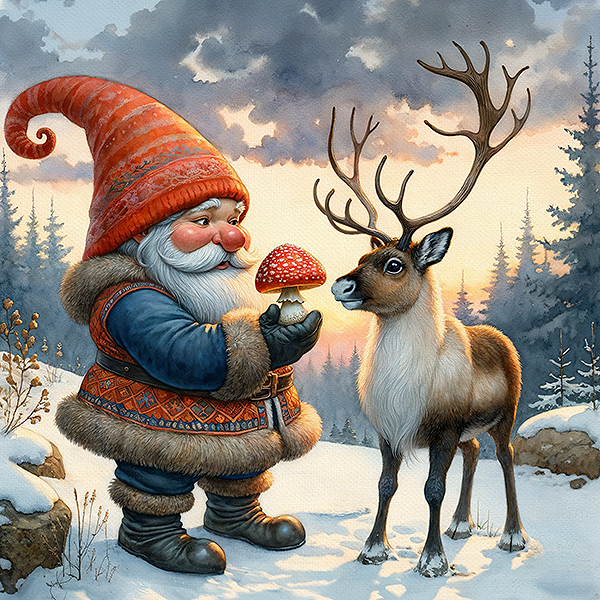
Reindeer are central figures in sacred stories told at this time of year. Current reindeer stories, prevalent during the winter holidays, are modern tellings of much older stories. They are tied to the landscape of the northern places where Yule has its roots.
Reindeer are one of the most iconic figures of the season and one of my personal spiritual affinities. Therefore, I’ve enjoyed researching the historical connections between reindeer and the various winter holidays over the years.

Keep the Magic of Yule
Let’s just say there are many theories about the significance of reindeer symbology, and yet we will never know the “truth” with 100% accuracy. Plus, this is a magical time of year, and I intend to keep to that spirit in this article.
As an anthropologist, I enjoy researching and reading all kinds of crazy theories to suss out common threads. I do this from the desire to get closer to my Ancestors by learning about the world they lived in. So, I will present some historical pieces and references for further exploration but not at the cost of losing the magic.
Why?
Because the sacred is not 100% based on facts. It is about belief and faith. Even spiritual texts are often based on the experiences and stories of people having an otherworldly experience that they shared. Spirituality and history have a significant link when trying to keep the Old Ways of our Ancestors. Yet, their association can’t be the only angle we look at things if we want to get the whole picture.
The Importance of Reindeer to Humankind
The word reindeer comes from the Old Norse hreindyri. Other sources connect it to words in Finnish or Sámi, like raingo. In Old Norse and modern Norwegian, the word dyr means an animal, in general. Similarly, in Old English (deor), Old Frisian (diar), and Dutch (dier), all denote a wild animal or “beast.”
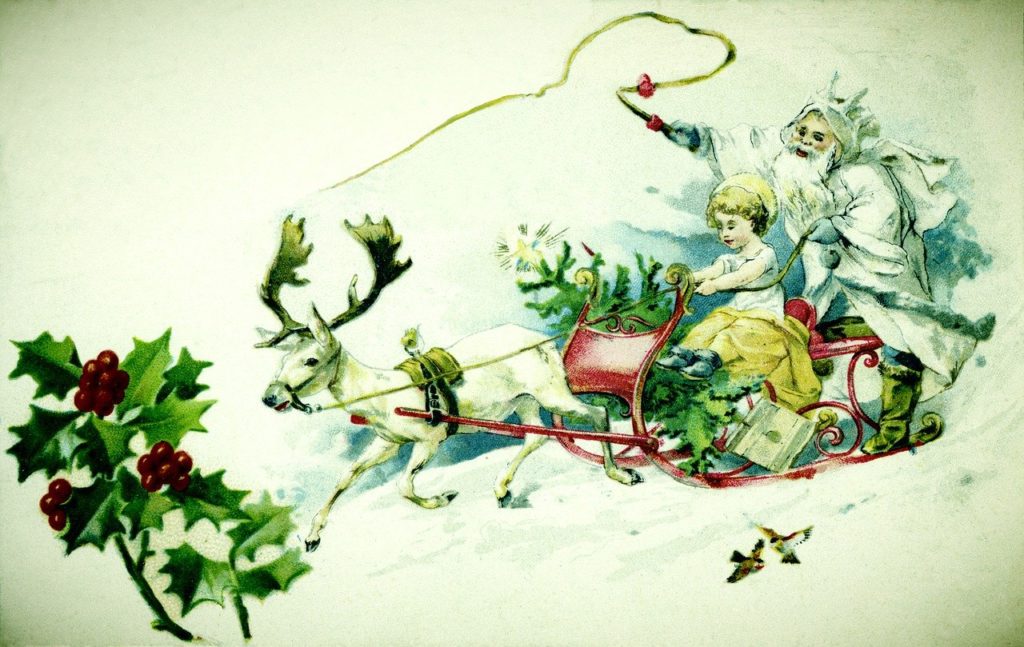
Santa’s Reindeer
Reindeer are inseparable from the figure of Santa Claus in our modern world. In this article, I will not go into all the ideas of where that character originates. I’ll save that for an article unto itself that I will likely tackle next Yuletide. But…
Is Thor Santa?
Thor, the Norse God, is often offered up as a historical influence on the modern-day Santa Claus. As soon as you begin to search the sacredness of reindeer during the winter season, his name will always come up. That’s because Thor is well known to have two sacred, resurrecting goats, Tanngrisnir and Tanngnjóstr, who pull his chariot across the sky. If you theorize that he is the inspiration for Santa, then just turn goats into reindeer and it’s easy to see a connection without looking too hard.
Interestingly, we know that two of Santa’s Reindeer are named Donner and Blitzen. These aren’t just fantastical names for mythological creatures. Instead, in the original Twas the Night Before Christmas, they were called Dunder and Blixem, which are colonial colloquial Dutch words used in New York for thunder and lightning. In proper Dutch, the words are Dunner and Bliksem. Thor, of course, is deeply associated with these two natural phenomena.
In Old English, Thor is called Þunor, in Old Frisian as Thuner in Anglo Saxon as Thunar, and in Old High German as Donar — all ultimately stemming from the Proto-Germanic *Þun(a)raz*, meaning Thunder.
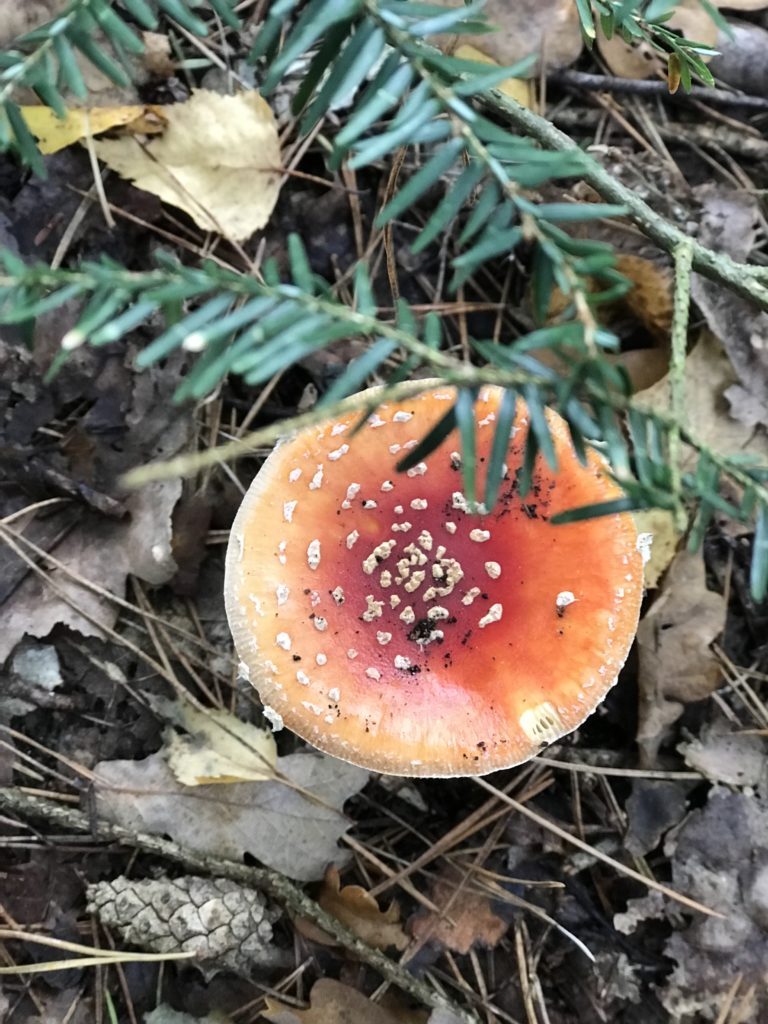
Amanita Muscaria, the Fly Agaric
In the arctic regions, there is a fungus native to the temperate and boreal regions of the northern hemisphere. It is a particular bright red and white mushroom, the Amanita muscaria. What most people call a toadstool, this mushroom is associated with gnomes, fairies, and all manner of little people in our mythic minds.
The Amanita Muscaria mushroom grows in a symbiotic relationship with pine and birch communities but can grow together with various deciduous and conifer species.

Do Reindeer Really Know How to Fly?
The Amanita Muscaria mushroom is also one of the favorite foods of reindeer. It is not fully understood whether that is because the mushrooms are a highly nutritive food or because they make reindeer feel euphoric. Yet, under the hallucinogenic influence of the mushroom, they prance, leap, and jump high in their exuberance. Some folklorists suggest this as the real-life basis for flying reindeer.
However, unlike humans, reindeer bodies can process the harmful toxins in the fresh fungi, so it doesn’t make them sick.
Foraging books often classify fly agaric mushrooms as fatally poisonous to humans. However, fatal poisoning from ingesting this mushroom is extremely rare. Yet, they should be treated with caution and never consumed fresh unless, of course, you enjoy extreme nausea, shaking,10-hour headaches, and seizures, all of which are common side effects of eating raw A. muscaria.
The toxins in the mushroom are water-soluble. Therefore, parboiling the fruit bodies can detoxify them, rendering them edible (Rubel, W.; Arora, D. (2008). “” Study of Cultural Bias in Field Guide Determinations of Mushroom Edibility Using the Iconic Mushroom, Amanita Muscaria, as an Example”“(PDF). Economic Botany. 62 (3): 223–43.)
Drying them out can also render them edible in some cases. There are accounts that arctic peoples in Siberia would fill their stockings or other cloths with the mushrooms, then hang them over the fireplace to dry them for consumption. I think we all know where that idea might lead.
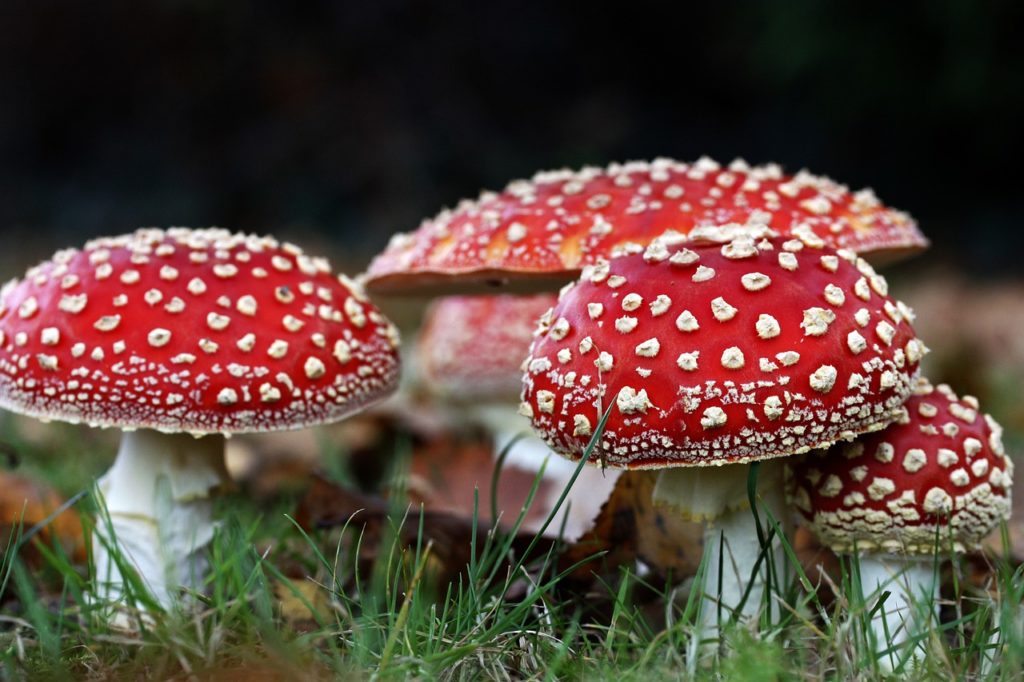
Significance of Fly Agaric to Indigenous Reindeer Herding Cultures
Amanita Muscaria is well documented as being used among almost all the Uralic-speaking peoples of western Siberia and the Paleosiberian -speaking peoples of the Russian Far East.
To this day, it has a religious significance in the cultures of the Tungusic people. They consume the Amanita muscaria mushroom, either raw or distilled in the urine of their reindeer. The mushroom is still used by the Sámi in religious ceremonies as well.
Some stories explain, like in the case of the Tungusic, that after the reindeer eats the mushroom and their digestive system processes the toxins when they urinate, the holy people or shamans might collect it for ceremonial purposes.
They might drink it in ceremony to induce trance and use it to reach the World Tree on the night of the winter solstice. Similarly, their destination might be to the Otherworld. There they could receive vital knowledge to help their community during the coming year. In some legends, shamans fly to the North Star on the back of a reindeer on the winter solstice to retrieve such gifts.

Some say it is the other way around. Among the Koryaks, indigenous people from the Russian Far East, people have documented that the poor would consume the urine of wealthy people who could afford to buy the mushrooms. It was also reported that the local reindeer would often follow an individual intoxicated by the mushroom. Then when the person urinates, the reindeer would eat the melted snow and become intoxicated. This process made it easier for the people to then harness and redirect the reindeer (Wasson, R. Gordon (1968). Soma: Divine Mushroom of Immortality. Harcourt Brace Jovanovick).
This is only some of the information we have about the importance, symbolism and relationships that reindeer and amanita muscaria have with the Indigenous peoples of the far north, and it is quite unlikely that we have the whole story, or are indeed entitled to it.

Reindeer Domestication Changed the Lives of Arctic Peoples
Yet for many of us, reindeer were important to our Ancestors, too, as they once ranged through much of northwestern Europe and north America.
Reindeer are believed to have been domesticated in Europe and Asia for almost 7,000 years, longer than horses. They’re the only type of domesticated deer, and most of the reindeer populations in those areas are domestic. The same animal in North America is called caribou, and they are almost always wild.
Reindeer have incredible endurance due to their large hearts, which carry them further and in harsher environments than any other land animal. They can sprint up to 50 miles per hour and travel 20 miles per hour over long distances. Some herds migrate over 300,000 square miles. A newborn reindeer is on its feet in minutes and can run as fast as an Olympic sprinter, only half an hour after birth.
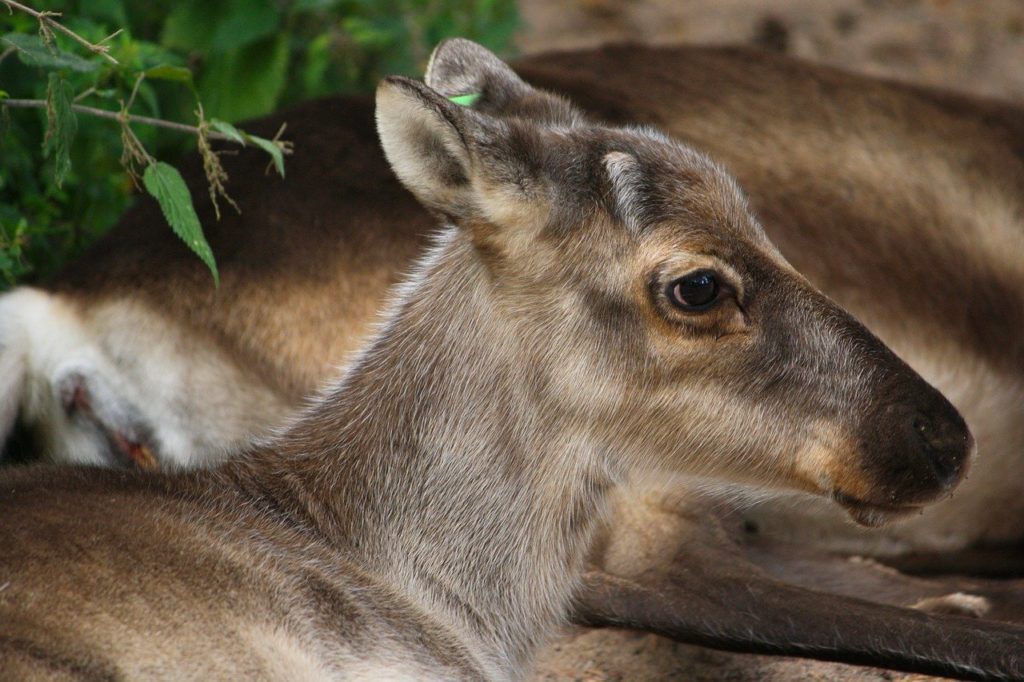
Through reindeer domestication, humans have gained many gifts: companionship, transportation, shelter, sustenance, and warmth. Perhaps someone attained this vital knowledge during sacred journeys to the Otherworld? We’ll never know whether information obtained on those spiritual journeys could be part of the “truth” of the stories we have heard about reindeer, and the ones we have not, as there are certainly many of those.
Indeed, we can draw on ancient solstice celebrations and the powerful symbolism of antlered figures so prevalent right now. We can find sacredness, meaning, and connection to this time of year through them in a way that is far removed from the commercial trappings of the season, which often create anxiety, and dread, disconnecting us from the magic of this season.

How Storytellers Have Been Doing It
Back to Reindeer stories…many storytellers and writers have drawn on that same ancient mythology. In so many myths, especially those about artists, writers, and other creatives, there is the figure of the “muse.” Artists often describe muses as a spirit that inspires creating a work of art, be it a piece of music, a painting, or a story. In my own stories, I know that characters often take on lives of their own, a shared experience among many writers.
Reindeer muses have been working their magic for eons. Perhaps reindeer muses are responsible for the domestication of their physical siblings to form a symbiotic relationship between humans and reindeer. A way to remind humans that we are part of nature, and only with nature can we remain as a species on this planet.
The first modern story to link reindeer to the figure of Santa Claus, a now-famous mystical partnership, is Old Santeclaus with Much Delight. This illustrated children’s poem was the first printed story describing Santa as having a sleigh pulled by a Reindeer.
The story was published in New York in 1821 by William B. Gilley, just two years before the more famous first publication, Twas the Night before Christmas. The reindeer muses sure were busy in the 1820s.
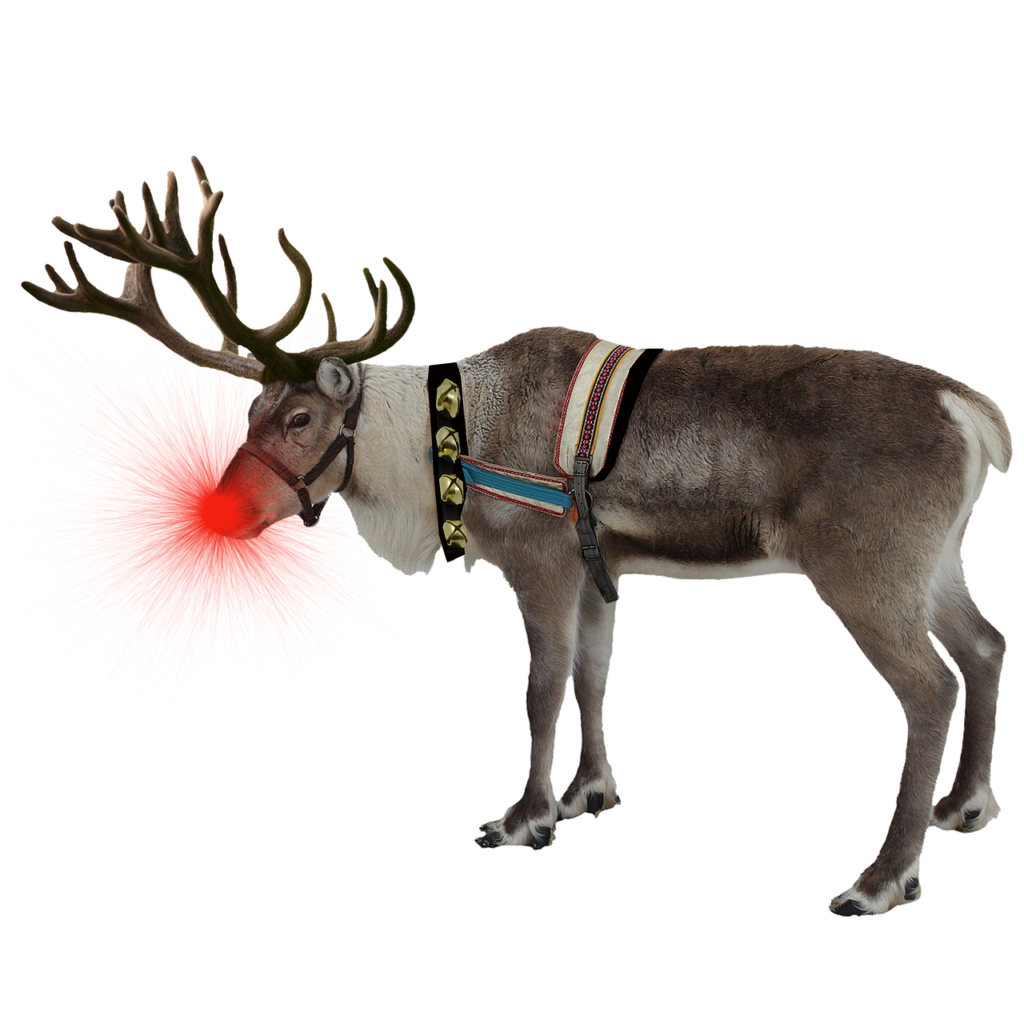
What About Rudolph?
Rudolph is a completely fictional character, much to my dismay because, like many other children, I absolutely adored him when I was of a tender age. In all honestly, I still do.
He is unique, an individual, and although his bright red nose attracted a lot of ridicule and isolation at the beginning of the story, this feature alone helped him save Christmas and gain eternal notoriety!
I read somewhere that originally the character was named Rollo, before Rudolph, which I love because it is my son’s name.
Perhaps Rudolph’s story is not an ancient one. However, it does speak to the very heart of Old Ways for Modern Days in that the distinctive gifts that we are born with are the ones that guide us to fulfilling our mission, and we all have one while our souls reside on Earth.
Therefore, like Rudolph, when we embrace that which is unique to us, we are more likely to thrive. It might also be that the author, Robert Lewis May, knew about the associations between amanita muscaria and reindeer. Perhaps it gave him the idea for Rudolph’s red nose. Unless he knew that reindeer’s noses actually do look a little red. That’s because they have densely packed blood vessels in their nose to warm the cold arctic air before it hits their lungs. Another evolutionary feature which is unique to reindeer that help them survive some of the harshest conditions on Earth. No wonder Santa uses these hardy and hearty creatures to help him in his sacred work.
There is a little truth in all stories. We can then use that thread to trace back to the wisdom of our Ancestors.
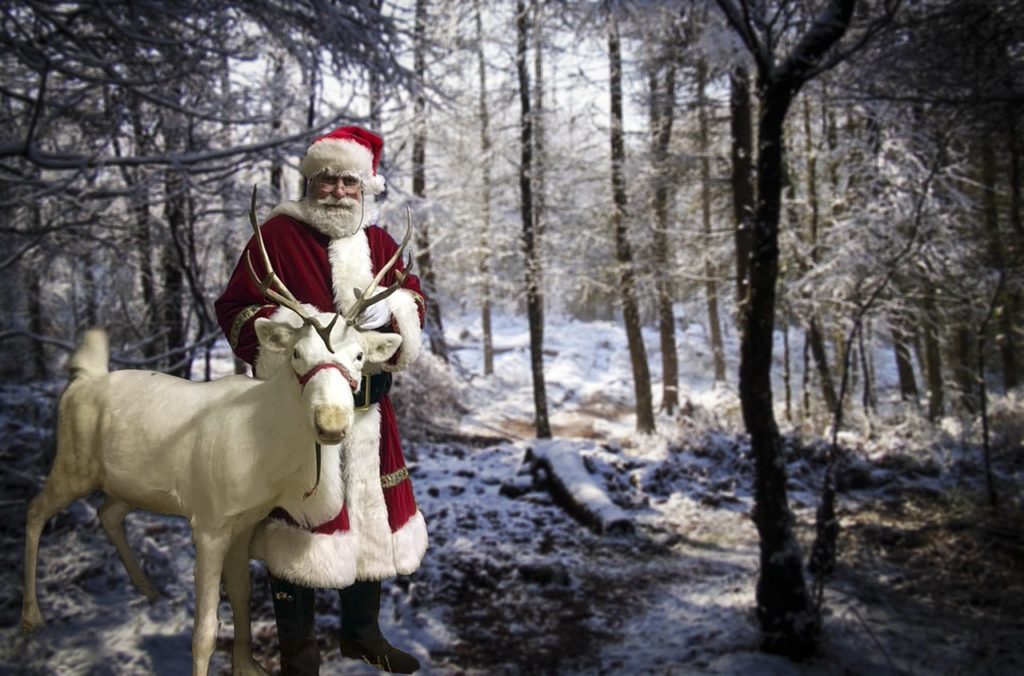
Stories are a Roadmap to Ancestral Wisdom
There is a lot of skepticism and criticism around the origins of wintertime, solstice, yule, and Christmas figures that don’t have clear historical links. Sneering talk of “Coca Cola Santa” and disdain for those who bring up the possible link between Santa Claus and Siberian Shamans or even magical flying reindeer are rampant this time of year. Like they will earn a badge of honor if they disprove anything magical about this season once and for all.
If you are into that sort of “debunking,” a term I dislike because it assumes a 100% truth exists, then you will find “Debunking the”Mushroom Santa Hypothesis” an interesting listen. I certainly did.
However, with that narrow, and dare I say, somewhat arrogant viewpoint, we exclude all possibility of the spiritual– the influence of muses, the possibility of psychic journey, and the magic that surrounds us as vital and truthful informants. Not to mention the fact that we cannot know all.
We are in constant communication with the Old Powers whether we realize it or not. They are always whispering in our ears – from the fanciful to the practical and life-changing. It is how they live on in our modern world; they change and adapt to the times like all other beings. Our limited view and understanding as humans, in addition to our static view of the past and even reality, hinders our ability to see many different types of truth. Winter gives us space and breathing room to open ourselves up to the Otherwordly messages that are trying to come through at this time. Vital information we might receive to support us in our own sacred work.
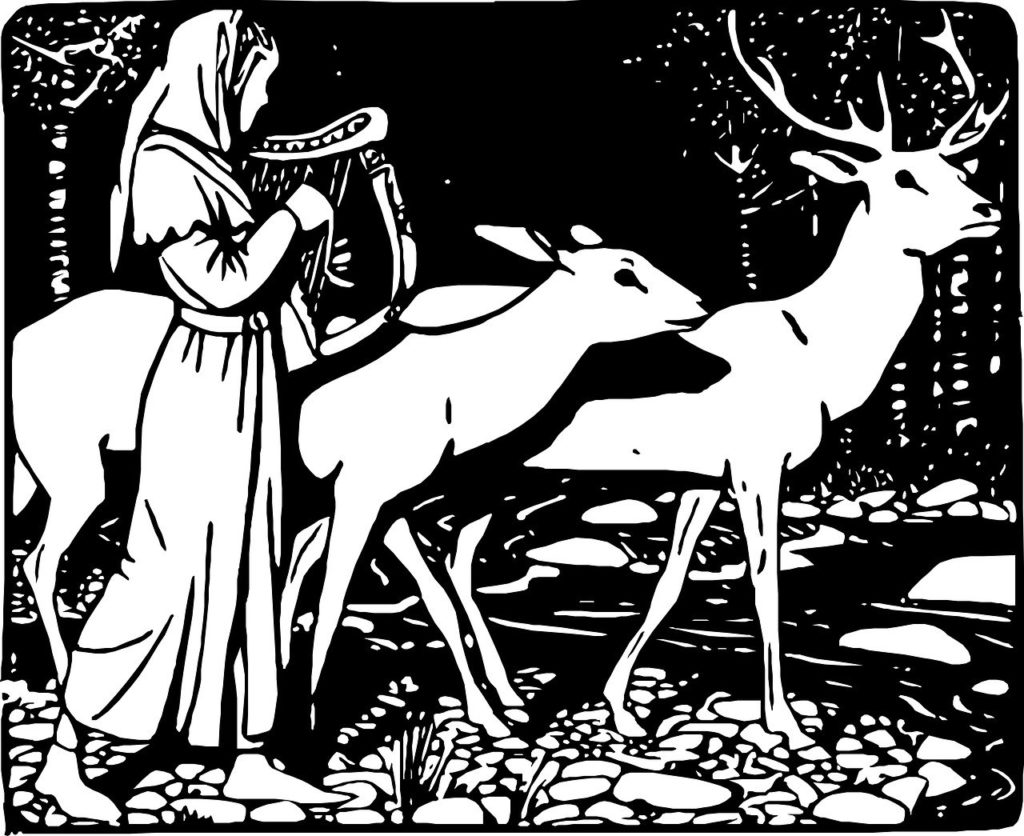
Reindeer as the Divine Feminine
Descended from my northern European mothers, I remember that at one time, all my Ancestors down those lineages celebrated the winter solstice. To them, the reindeer was honored as sacred mother. Only the female reindeer retains her antlers in winter, which means it is the divine and magical feminine that has been passed down and is honored and celebrated through our modern reindeer symbolism.
Although, with names like Vixen, we shouldn’t be surprised.
These sacred traditions are our birthright, and it is time to reclaim it. We can create lasting memories and traditions for our own families by drawing on this truth during this time of year– the truth of our Pagan past, the reality of our connection to the Old Powers and our oneness with nature. We can pass these traditions and truths down the line so that the light of our Ancestors never burns out forever enriching the lives of our children and descendants.
If you are looking to unlock more seasonal magic and connect to comfort & joy, check out my mini-course, starting December 20, 2021.
Related Posts:
12 Days of Yule: Day 1 – Mother’s Night
12 Days of Yule: Day 2 – Winter Solstice
12 Days of Yule: Day 3- Hygge (Can Change Your World)
12 Days of Yule: Day 6- Jul
12 Days of Yule: Day 12- Scottish First Footing Tradition
Celebrating the 12 Days of Yule Mini-Course
A Guide to Celebrating the 12 Days of Yule
12 Days of Yule: Day 10- Yule Elf Folklore for Children

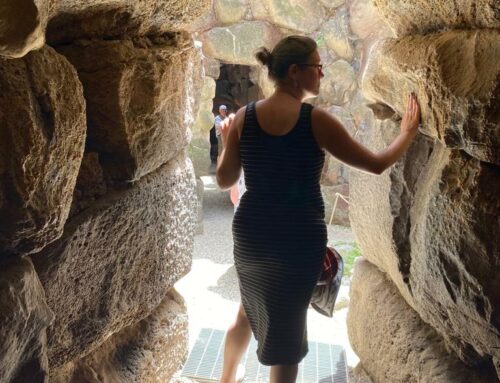
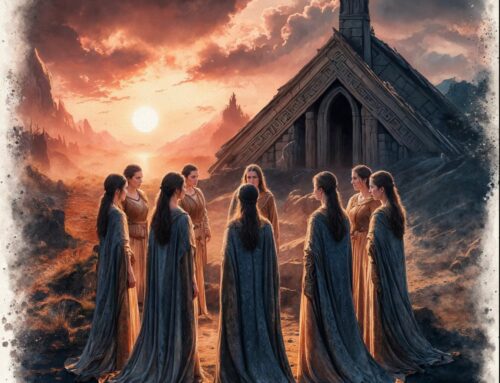
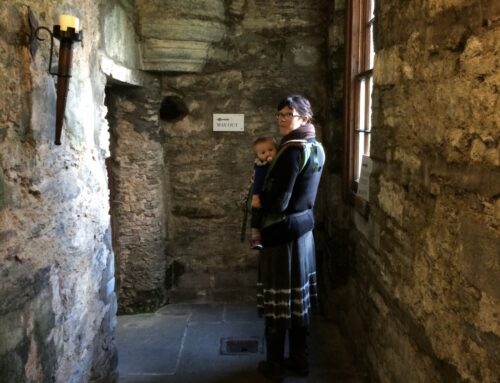
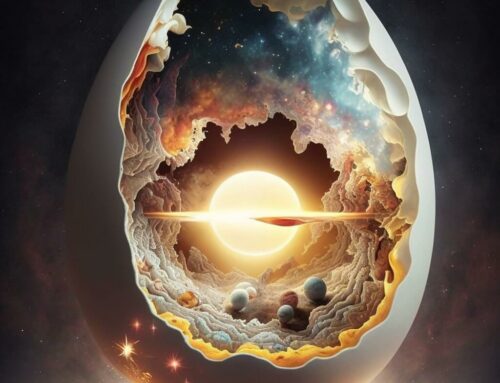
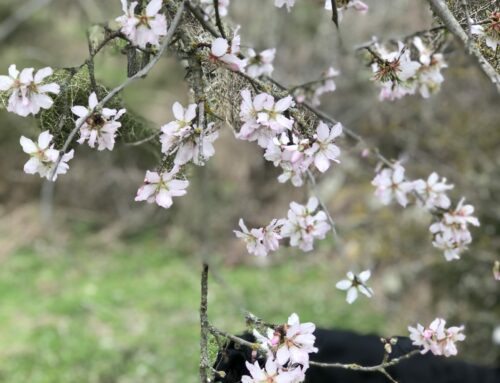


Leave a Reply